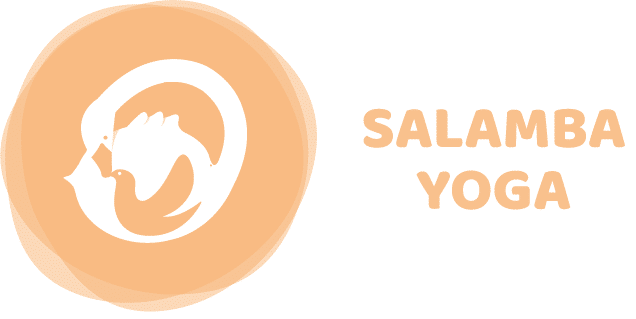There are 5 stages of asana delivery:
- Name of the asana
- Meaning of the asana
- Preparatory posture or position
- Intermediate work
- Classical posture
We will get into further detail on these stages later. First, we will get into the aspects of asana delivery.
There are 4 aspects of asana delivery:
- Demonstration
- Instruction
- Observation
- Adjustment
A skillful teacher should know how to perform these tasks simultaneously. It requires lots of self-practice and practice under a good teacher to perfect the above-mentioned aspects.
1. Demonstration
Demonstration is an important part of asana delivery especially when delivering asanas to beginners who are not acquainted with names and forms of yoga asanas.
A teacher may not always necessarily demonstrate a yoga posture so as to initiate students into yoga postures in a yoga class. Demonstration can also be performed by asking one of the students to do the asana.
Every asana requires a number of cues to be followed and kept in mind by the practitioners. As a student demonstrates, the teacher can shed light on these different aspects of postures. Cues to be given in a posture also depend on the level of the practitioners. For example, for a class of beginners’, cues related to organic body may not work at all and while giving classes to aware students and practitioners who have a firsthand understanding of their bodies, general cues may be a waste of time and effort.
There may be a need for re-demonstrating if a teacher feels that the key points explained in the asana are not being followed by the students.
NB: Ashtanga and Vinyasa classes are dynamic flow forms of yoga asanas which do not leave space for the above-mentioned explanation of demonstration.
2. Instruction
Instructions are the bridge between the teachers mind and the student’s body. Therefore, instructions are a very important stage of asana delivery.
A yoga teacher, while conducting a class, cannot be physically present with every student individually. With the help of instructions, a teacher manifests his/her intelligence into the bodies of the students.
Instructions have to be easily understandable and generic but customized according to the needs and particular level of the class. In customizing the instructions, the teacher should make a pragmatic attempt to mold or modify the instructions as and when required. For example, thighs roll in, in case of Admomukha Svanasana (downward facing dog) generally and it’s a good cue to remind the students about sacro iliac space however, in the case of practitioners with knocked knees, this cue may not be very useful because this is where good observation comes into play, which we will discuss below.
Always remember, really good instructions minimize the need for physical adjustments and are considered verbal adjustments.
Instructions must follow a particular order:
- Initiating an asana;
- Movement from the parent posture into the actual posture;
- Retaining the posture; and
- Moving out of the posture.
A good teacher must pay equal emphasis on all of these aspects.
a. Initiating an asana
Bringing awareness to the points of contact and retaining awareness of the space in cavities is very important. Initial instructions of yoga asanas must cater to this very important factor.
b. Movement from parent posture into the actual posture
Transition from parent posture (yoga asana) to actual classical posture is a very crucial point. A good teacher makes sure that essential work on body joints is not lost while making the transition from the parent posture.
c. Retaining the posture
Actual work in a posture is creating the longevity of the posture. Retaining the posture is not just about being in the posture, an active and intelligent work has to be created in the final posture. This requires a number of cues pertaining to different body parts and muscle groups.
d. Moving out of the posture
One of the most overlooked and neglected part of yoga asana delivery is coming out of postures. A yoga asana finishes only after coming back to the parent posture and good amount of awareness has to be put to the phenomenon of releasing it by engaging the muscles around major joints in operation.
3. Observation
Instructions without a practical impact are a waste of time and effort of a yoga teacher. A deliberate effort has to be made to make sure that the instructions are being followed and change has been initiated in the practitioner’s body.
A yoga teacher may observe that even the most general instructions at times are not followed by the yoga practitioners. Reasons for not following the instructions may vary from student to student and this could be remedied by knowing how to use different kinds of references in ones instructions. These references could be:
a) Bone reference
b) Muscle reference
c) ….
The rest of the material is available in the Salamba Yoga 200 Hours Yoga Teacher Training Manual. If you like what you have read so far, contact us about our yoga teacher training courses held in the beautiful location of Pokhara, Nepal.
